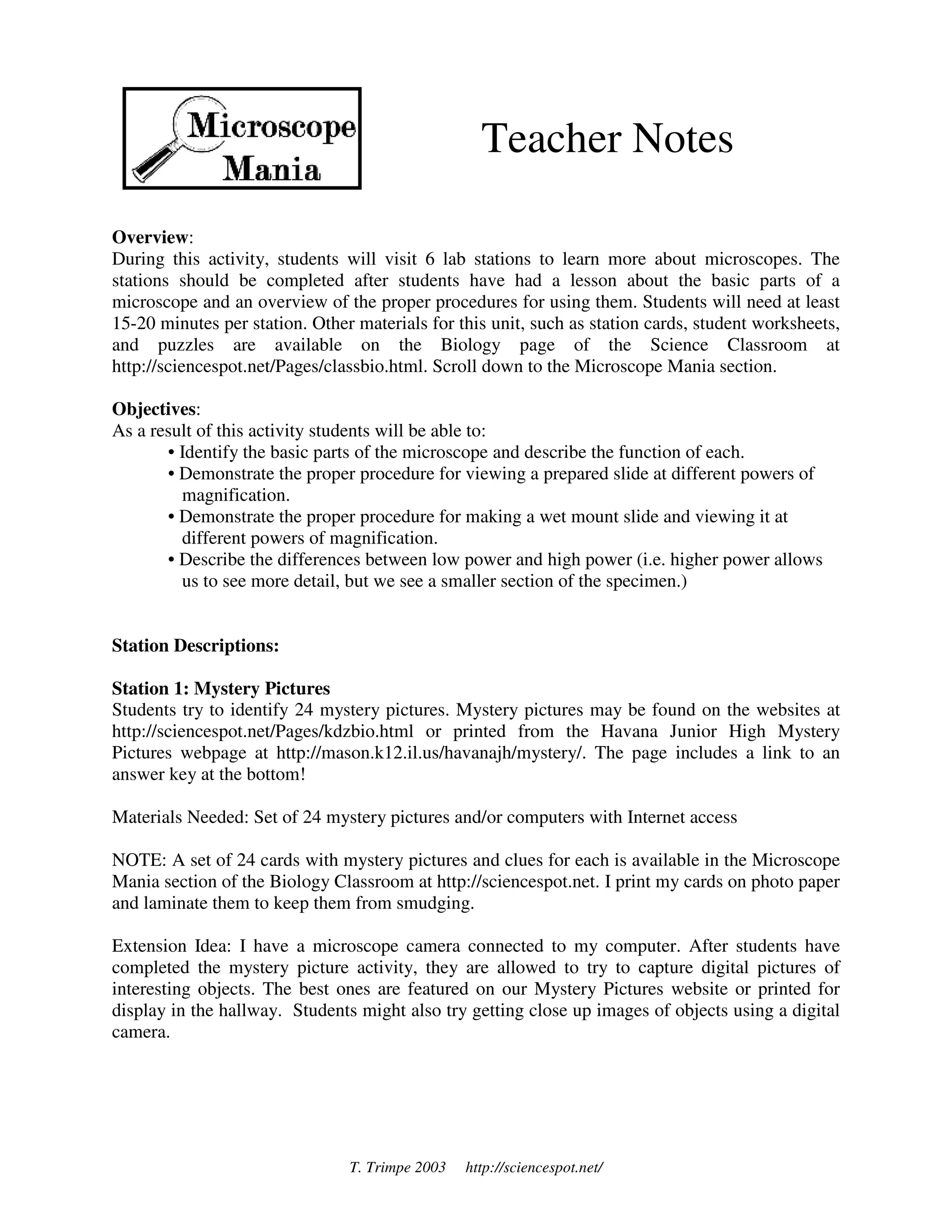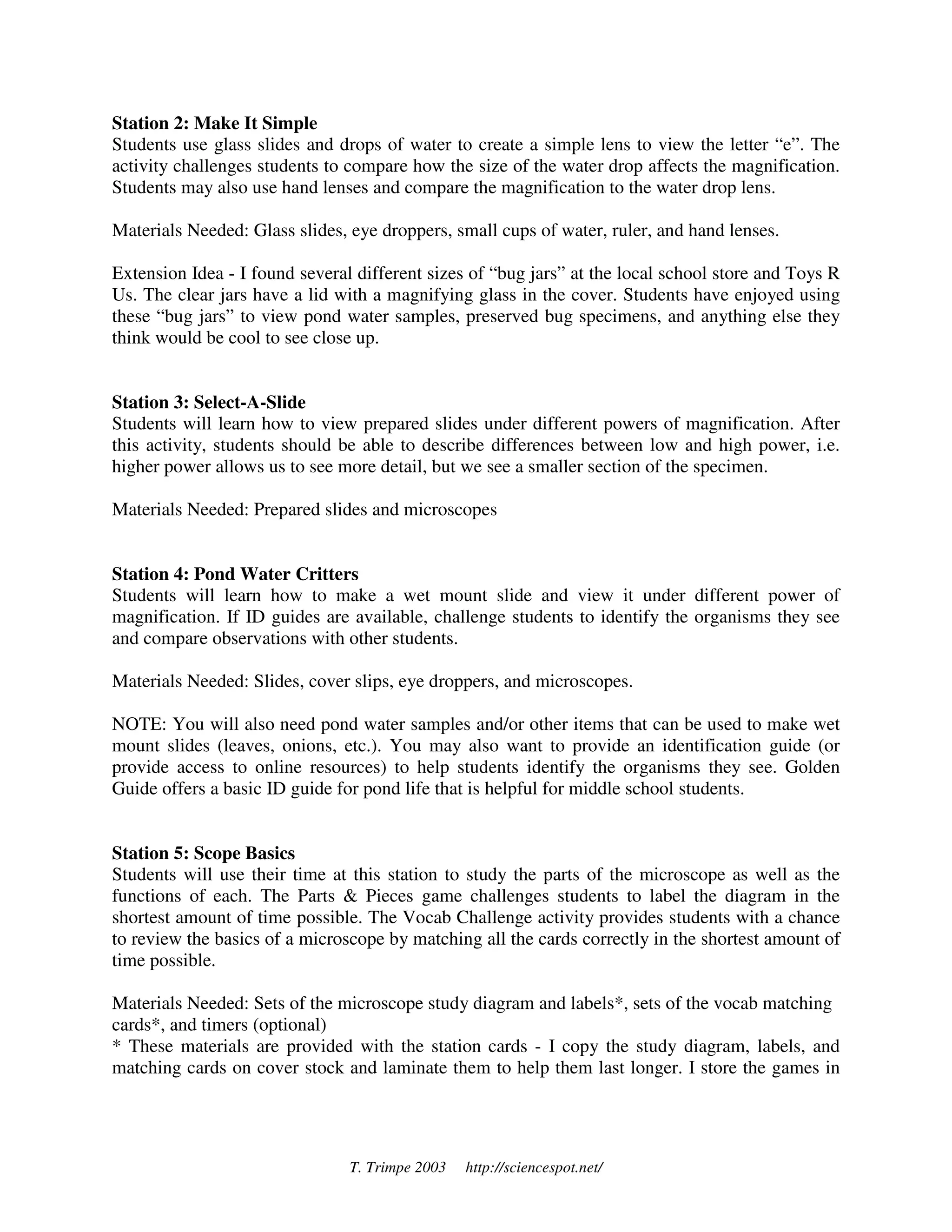This document provides an overview and instructions for a student activity involving 6 stations to learn about microscopes. At each station, students will spend 15-20 minutes participating in hands-on activities or using online resources to identify microscope parts, learn proper use techniques, and view prepared slides and pond samples. The objectives are for students to learn the microscope parts and functions, demonstrate use procedures, and understand magnification differences between low and high power.


